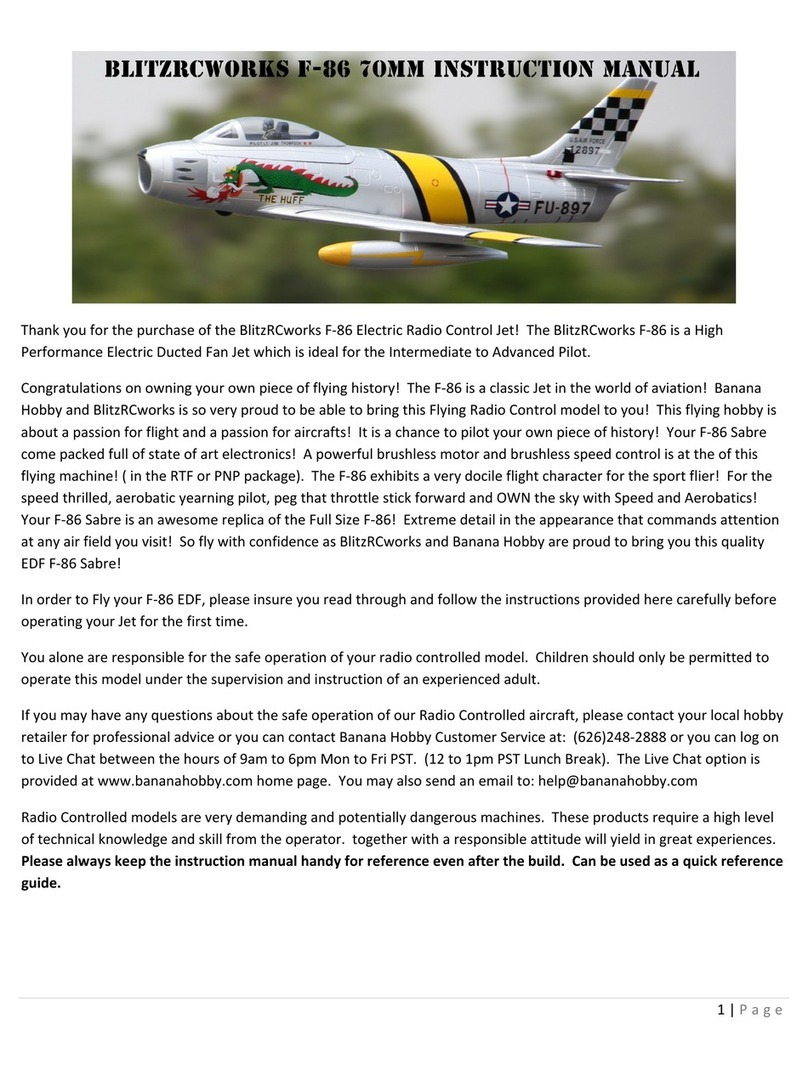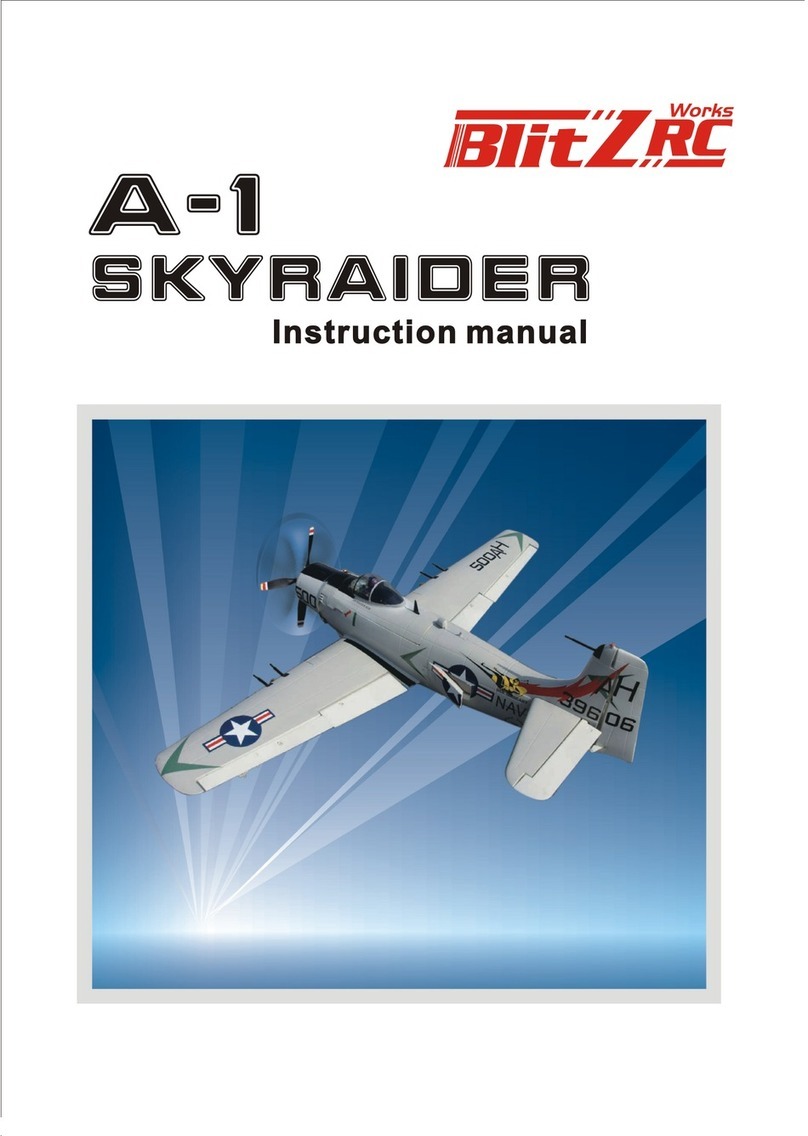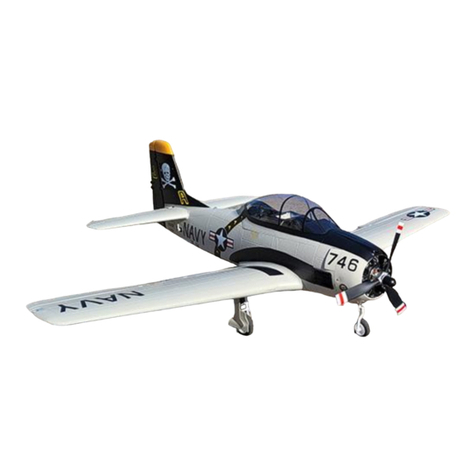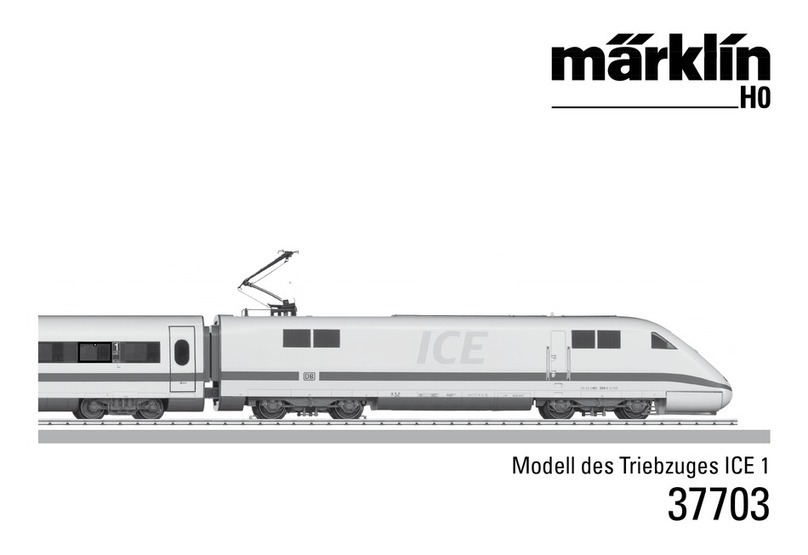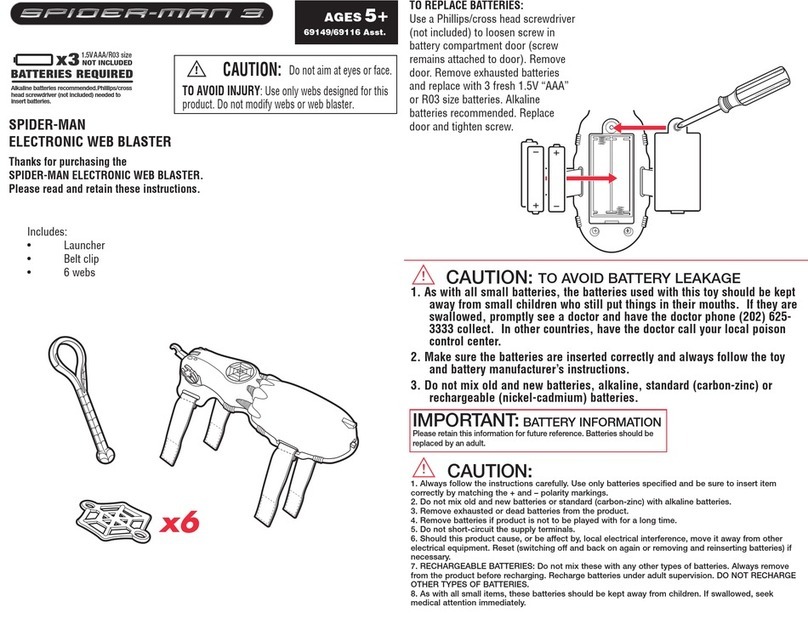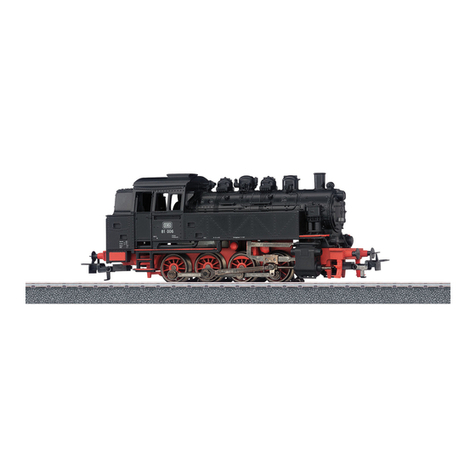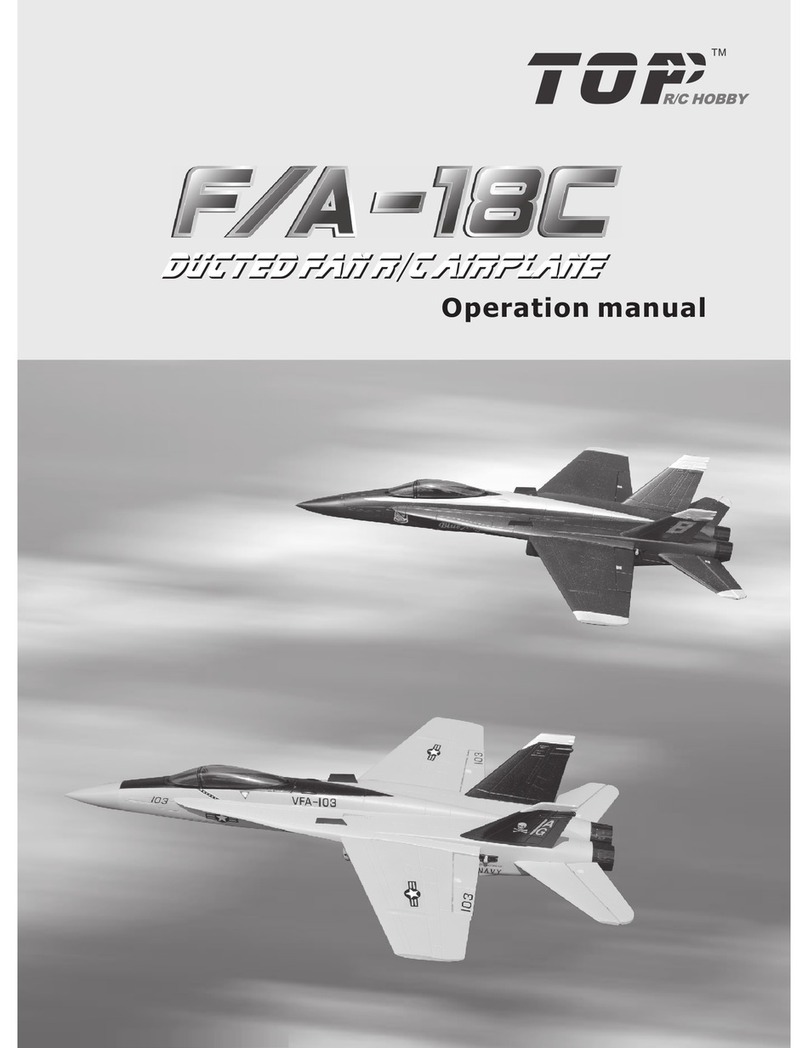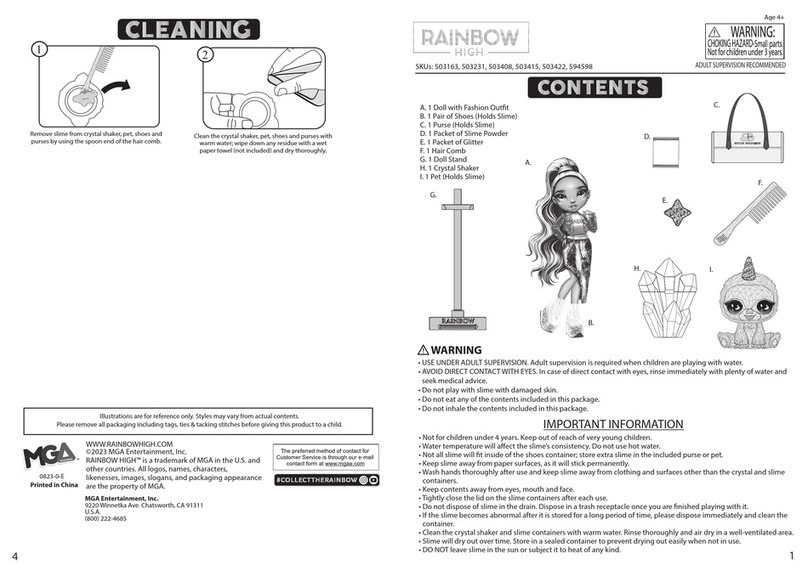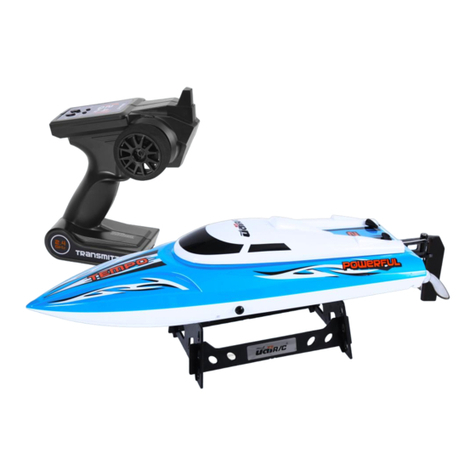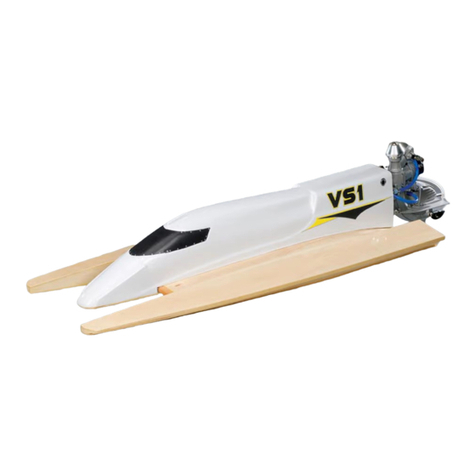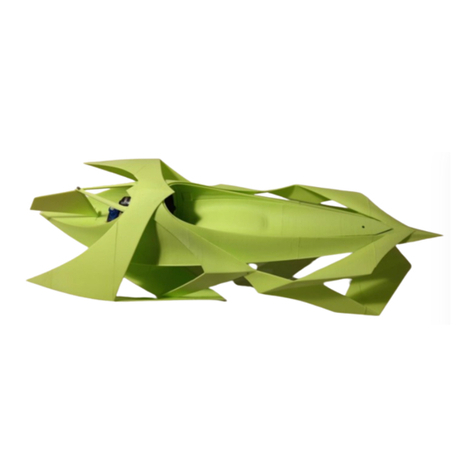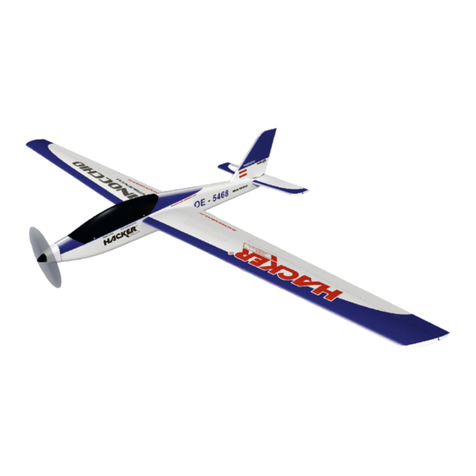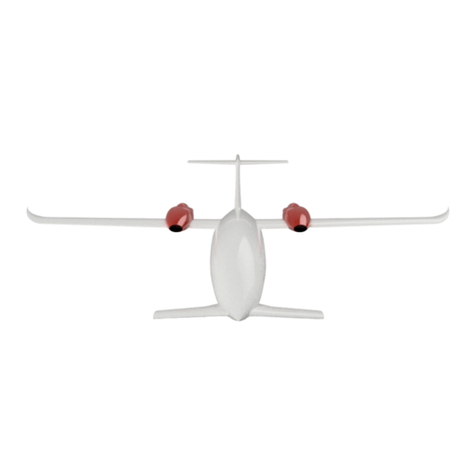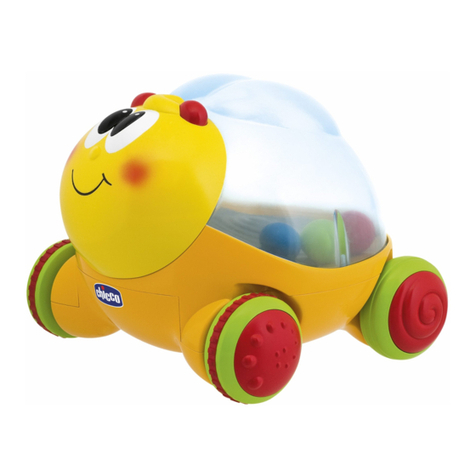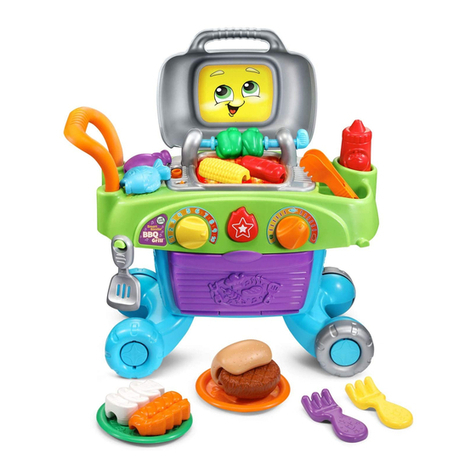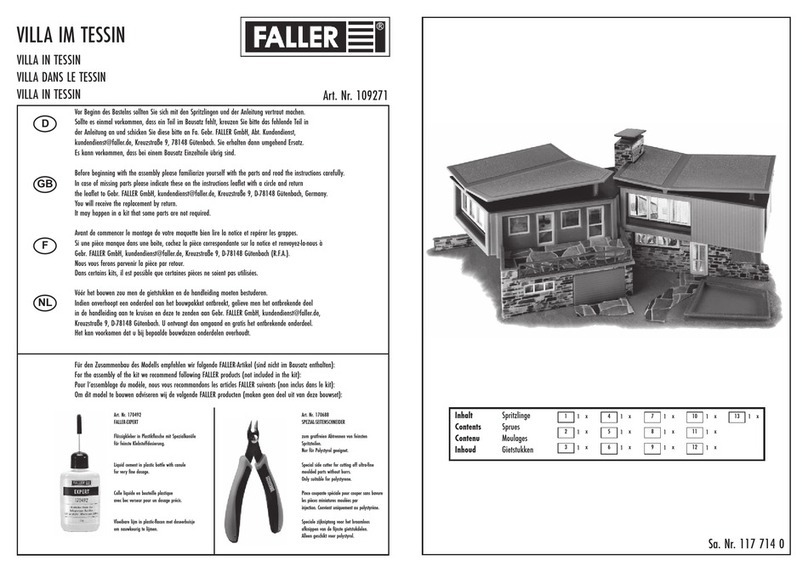BlitzRCWorks T-50 User instructions

Assembly and Operating Manual
T-50
SPECIFICATION
Length 35.11inch (899mm)
Wing Span 25.12 inch (638mm)
Flying Weight 29.05 oz (830g)

Assembly and Operating manual T-50
2
Dear customer,
Congratulations on your choice of a
factory-assembled model aircraft from
BlitzRCWorks and thank you for trust to us.
Very little preparation work is required to get this
model ready to fly. To operate your new model
safely it is important that you read through all of
the instructions and safety information included
with your model, before you fly it for the first time.
The illustrations in this manual show the model
with factory applied decals.
The power system
The model is powered by two brushless
outrunner motor and ducted fan, both of which
are factory-installed on the Ready-To-Fly
version.
The motor is connected to the electronic speed
controller which is factory calibrated on the
Ready-To-Fly version. All that is required is to
charge the Li-Po battery, following the safety
instructions, and connect the battery to the
electronic speed controller.
The radio control system
To fly the T-50, a radio control system is
necessary, at least four channels 2.4GHz radio
system is recommended, similar to the unit
included with our Ready-To-Fly version.
The servos for the ailerons and the elevators are
factory-installed.
The power for the receiver is drawn from the
electronic speed controller’s integral BEC
system.
The electronic speed controller is inside of the
fuselage, in front of the ducted fan.
To check the model’s operating systems, first set
the control surface servos to neutral by setting
the trims to center and leaving throttle stick and
trim to the lowest position.
When you wish to fly the model, always make
sure the transmitter is “ON”. Move the throttle
stick to the “OFF” position as well. Then connect
the battery to the electronic speed controller.
Proceed to power down in reverse order:
disconnect the battery from the electronic speed
controller first, and then switch off the
transmitter.
Glued joints with suitable adhesives
Foam safe epoxy is recommended and available
from most reputable model retail shops.
Trial-fit all parts “dry” before applying glue.
Follow the recommended curing time suggested
by the glue manufacturer. Allow the glue to fully
cure (harden) to the point where the joint can be
placed under stress.
Kit contents
Fuselage, with motor, electronic speed controller
and servos
Transparent canopy and cockpit
Left / right wing with ailerons
Left / right tail wings with elevators and vertical
stabilizer

Assembly and Operating manual T-50
3
Fig. 1 Open the box and check all the parts.(Pic.shows for PNP version)
Parts Illustration
Parts List
NO.
Description
1
Fuselage
2
Nose Cone
3
Cockpit Canopy
4
Wing Set - Two Wings
5
Tail Set - One set of Horizontal Stabilizers
6
Tail Set - One set of Vertical Stabilizers
7
Push Rods Set
8
Landing Gear
9
Control horn
10
Hinge
1
2
3
4
5
6
7
8
9
10

Assembly and Operating manual T-50
4
Fig. 2 - Locate the push rods set.
Fig. 5 –The finished view after glue the aileron
in place is shown as above photo.
Fig. 3 - Install the aileron control horn.
Fig. 6 –Prick four holes in the horizontal and
fuselage with awl.
Fig. 4 –Glue the aileron and fuselage.
Fig. 7 –Glue the hinge and push them into the
holes.
2
3
4
5
6
7

Assembly and Operating manual T-50
5
Fig.8 - Connect the horizontal stabilizer with
fuselage. The finished view is shown as above
photo.
Fig.11 –Glue the servo and fuselage, then put
the servo into the groove.
Fig. 9 –Attention:when assembly the horizontal
stabilizer, please make sure its top point is
equal with the center line
Fig. 12 –Glue the ducted fans and put them
into the locations where mount them.
Fig. 10 –Ready to assemble the servos and
motors and ESCs. For PNP version, it’s
assembled in factory.
Fig.13 –Put the servo wires into the Wiring
Duct
8
9
10
11
12
13

Assembly and Operating manual T-50
6
Fig. 14 - The finished view after gluing the
servos and ducted fans in place is shown as
above photo.
Fig. 17 –Connect the push rods with servos
and lock into the rudder.
Fig. 15 - Apply glue to the Vertical Stabilizer.
Fig. 18 –Assemble the push rods into the
rocker as shown in the photo .
Fig. 16 –The finished view after gluing the
Vertical Stabilizer is shown as above photo.
Fig. 19 –Assemble the landing gears.
14
15
16
18
19
17
Elevator
aileron

Assembly and Operating manual T-50
7
Fig. 20 –Glue the landing gear into the
fuselage.
Fig. 23 - Locate the battery and canopy. The
battery is put as the arrows direction.
Fig. 21 –Put the nose cone to the fuselage
Fig. 24 - Place the fully charged battery in the
fuselage and connect it to the electronic speed
controller (Be sure the transmitter is “ON” first).
The canopy is held in place by magnets and
can be lifted off.
Fig.22 -Connect the electronic speed controller
and servos to the receiver. Refer the radio
instructions for the correct channel sockets and
servo lead polarity.
Fig. 25 - Congratulations, you have completed
the assembly process. Wish you enjoy flying
your new model!
20
21
22
23
24
25

Assembly and Operating manual T-50
8
Fig.26 - Charge the battery, and connect the white charge lead and adapter lead
matching your charger (adapter lead not included).
Fig.27 - Switch the transmitter on and move the throttle
stick to the “OFF” position (Diagram shows right joystick
as throttle joystick, which is mode 1).
26
27

Assembly and Operating manual T-50
9
Fig. 29 - Checking Ailerons and Elevators
- Check that the control surfaces respond to the
appropriate movements of the transmitter joysticks.
If not, swap over the servo lead at the receiver.
- Check the neutral position of the control surfaces;
you may need to screw the clevises in or out to
correct any discrepancy.
- Stand behind the model.
- Check the direction of rotation of the servos:
- Pull the elevator stick back towards you ( c),and the
trailing edge of both elevators should rise (c).
- If either function works in the wrong way, correct it
using your transmitter’s servo reverse switch for that
channel.
Fig.30 - Checking the power system
- Hold the model securely.
- Remove any loose objects such as cloths, tools, etc
from the area in front of the model, as they could
easily be sucked into the ducted fan.
- Open the throttle (stick forward ): the motor should
now run and you should feel a strong air flow
rushing out from the tail end of the model.
- Move the throttle stick back to the “OFF” position.
- Disconnect the battery from the electronic speed
controller and then switch the transmitter off.
29
30

Assembly and Operating manual T-50
10
Fig.31 - Checking the model’s Balance
- Place the battery in its compartment without connecting.
- Mark the Centre of Gravity (CG) on both sides of the fuselage; the
position is shown in the photo.
- Support the model at the marked points and allow it to hang freely.
When correctly balanced the airplane will remain horizontal with the
nose slightly down.
- If necessary, adjust the position of the battery to achieve the correct
CG.
- Mark the battery location in the fuselage, so that you can be sure of
positioning it correctly after recharging.
- Pack scrap pieces of foam around the battery in its final position,
otherwise there is a danger of it shifting in flight and altering the
model’s balance.
- Charge the battery and the model is ready for flight.
Fig.32 - Access to the ducted fan units and electronic speed
controllers
- The ducted fan units are accessible from underneath, if you need to
carry out maintenance work or repairs.
- Ensure that the wire colors match correctly.
31
32

Assembly and Operating manual T-50
11
Test Flying - Notes on flying the airplane
Please read the sections entitled “Routine pre-flight checks”and
“Flying the model”in the Safety Notes before attempting to fly the
T-50 for the first time.
- For the first flight you should wait for a relatively calm day with no
more than a gentle breeze.
- A good flying site is a large, flat, open field; well away from trees,
fences, high-tension overhead cables and other potentially
dangerous obstacles.
- Carry out a complete check of the working systems.
- We recommend this model with the method of running to take off..
- The model must be face the wind when ready to take off
- .
- Switch the motors on, and launch the airplane strongly into the wind,
with the fuselage and wings leveled.
- Allow the T-50 to fly straight and level initially; don’t try to turn it when
it is close to the ground.
- Adjust the trims if necessary so that the model settles into a steady
climb.
- Check the model’s response to control commands from the
transmitter.
- You may need to increase or reduce the control surface travels once
the model is back on the ground.
- Take the airplane up to a safe height and check its stalling speed.
- Keep the speed well up on the landing approach to avoid stalling.
- If you had to move the trims during the flight, correct the mechanical
linkages before flying again. This allows you to re-centre the trims, so
that full trim travel is available for subsequent flights.
- We reserve the right to introduce technical modifications and suggest
that you check our website for updates.

Table of contents
Other BlitzRCWorks Toy manuals
